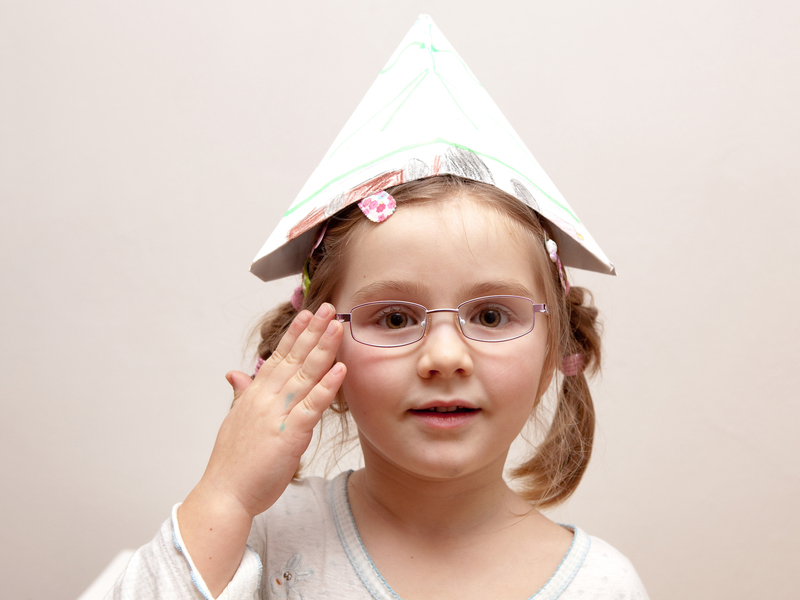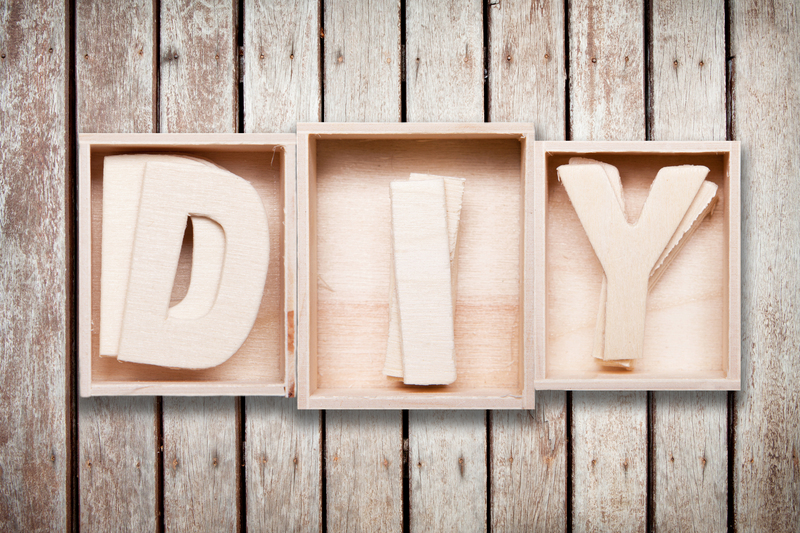Embrace Simplicity: The Art of Decluttering and Minimalist Living
Minimalism--the pursuit of simplicity and the reduction of excess--has become much more than a trend; it's a global movement toward intentional living. By embracing simplicity, individuals are discovering the profound benefits of letting go, reducing clutter, and finding freedom in less. In this comprehensive guide, we'll explore the philosophy behind minimalist living and decluttering, examine their advantages, and provide actionable tips to create a more purposeful, tranquil, and joyful life.
Unpacking the Meaning of Decluttering and Minimalism
At its core, decluttering refers to the process of removing unnecessary items from your living space. It is often the first step toward minimalist living, which is a lifestyle focused on owning fewer possessions and prioritizing what truly matters. As the saying goes, "Less is more." But what does this mean in practice, and why are so many people drawn to this lifestyle?
The Roots of Minimalist Living
Minimalism is hardly a modern invention; its roots trace back to various cultures and philosophies, such as Buddhist teachings that emphasize detachment from material possessions, and the Japanese concept of "ma," or the beauty in empty space. Today, minimalist living is often seen as an antidote to the overwhelming consumption and clutter that characterize contemporary life.
Decluttering vs. Organizing: Is There a Difference?
It's important to distinguish between decluttering and organizing. While organizing involves finding efficient ways to store your belongings, decluttering is about reducing the overall number of items you own. Decluttering is the foundation of true minimalism--a conscious decision to remove physical and mental excess.

The Benefits of Simplicity and Minimalist Living
Adopting a simple living mindset can bring remarkable improvements to various aspects of your life. Here's why so many people are choosing to embrace minimalism and decluttering:
- Less Stress: Clutter leads to feelings of overwhelm and anxiety. A tidy, simplified home fosters peace of mind and emotional well-being.
- More Time and Energy: With fewer items to manage, clean, and repair, you gain back valuable hours and mental clarity.
- Increased Productivity: An organized space minimizes distractions, sharpening your focus whether you're working remotely or managing a household.
- Financial Freedom: Minimalism encourages mindful spending, helping you save money by eliminating unnecessary purchases.
- Environmental Impact: Owning less means generating less waste and consuming fewer resources, which supports sustainability.
- Greater Appreciation: When you intentionally curate your possessions, you develop deeper gratitude and enjoyment for what you have.
Practical Steps to Declutter and Embrace Minimalism
Ready to embark on your journey toward simplicity? Follow this roadmap to decluttering and minimalist living:
1. Define Your Motivation
Why do you want to declutter or live minimally? Is it to save money, reduce stress, or create a more peaceful home? Write down your goals and revisit them when motivation wanes. This clarity will sustain your commitment throughout the process.
2. Start Small and Focused
The idea of decluttering your entire home can be overwhelming. Begin with a single area--perhaps a drawer, shelf, or closet. Completing small tasks builds momentum and confidence, making larger projects less daunting.
- Choose an easy starting point to avoid frustration.
- Set a timer for 15-30 minutes to stay focused and energized.
3. Use the Four-Box Method
This classic technique helps you make decisions efficiently. Label four boxes as follows:
- Keep: Items you use regularly or truly love.
- Donate: Items in good condition, ready for a new home.
- Recycle: Items that can be responsibly disposed of.
- Trash: Unusable or broken items.
Sort all belongings in the area you're decluttering into these categories--be honest with yourself!
4. Apply the "Joy Test"
This method, popularized by Marie Kondo in her "KonMari Method," asks: does this item spark joy? If not, thank it for its service and let it go. This gentle framing makes it easier to part with things that no longer serve you.
5. Digitize When Possible
Piles of paper, books, and photos take up both physical and mental space. Consider digitizing important documents, photos, and media. Cloud storage and organization apps make it easy to preserve memories without the physical clutter.
6. Create Daily and Weekly Habits
Consistency is key to maintaining a clutter-free home. Incorporate these habits into your routine:
- End-of-day resets: Spend five minutes each evening tidying up high-traffic areas.
- Weekly purges: Set a recurring date to check a single category (such as clothes or pantry items) for unnecessary items.
- Mindful purchasing: Before buying something new, ask yourself if it aligns with your minimalist goals.
7. Rethink Storage Solutions
Organizational products can be helpful, but don't fall into the trap of just "tidying up" clutter. Only organize what you truly need. Effective minimalism means having ample space for the items you own, rather than cramming more into each cupboard or closet.
8. Go Beyond Stuff--Declutter Your Digital and Mental Space
Minimalism is a holistic lifestyle. In addition to decluttering physical belongings, examine your:
- Digital life: Unsubscribe from unused services, delete old files, manage your email, and organize photos.
- Schedule: Streamline commitments, say "no" to non-essential obligations, and prioritize downtime.
- Mental clutter: Practice mindfulness, journaling, or meditation to foster clarity and peace.
Declutter Room By Room: A Practical Guide
Tackling your entire home in one swoop isn't realistic for most. Here are strategies for popular living spaces:
Living Room
- Keep surfaces (coffee tables, shelves) clear except for a few intentionally chosen items.
- Limit decorative objects--favor quality over quantity.
- Reduce electronic clutter: manage cords, devices, and remote controls.
Kitchen
- Clear countertops for cooking and calm.
- Eliminate duplicate gadgets and utensils.
- Dispose of expired or unused food items regularly.
Bedroom
- Keep nightstands clear of clutter--only essentials like a lamp or book.
- Pare down clothing using the one-in, one-out rule.
- Store items under the bed only if space is otherwise unused and organized.
Bathroom
- Toss expired medications and old toiletries.
- Store daily essentials within reach; extras can be stored elsewhere.
- Limit decorative items--keep it spa-like and serene.
Home Office
- Digitize paperwork whenever possible.
- Organize supplies in labeled containers or drawers.
- Keep only items on your desk that enhance your productivity.
Common Obstacles to Minimalism and Decluttering--and How to Overcome Them
Embracing simplicity isn't always smooth sailing. Here are common hurdles and strategies to overcome them:
-
Sentimental Attachments:
It's normal to feel emotionally attached to belongings, especially gifts and memorabilia. Try taking photos of personal items before letting them go, or select a few favorites to display rather than keeping everything boxed away. -
"Just in Case" Thinking:
Many people hold on to items out of fear they'll need them someday. Set a reasonable time frame (e.g., 6-12 months). If you haven't used it by then, it's probably safe to pass it on. -
Guilt Over Waste:
Decluttering doesn't have to mean sending everything to a landfill. Donate or recycle whenever possible. Remind yourself that keeping unwanted items doesn't reverse waste--it just adds to personal clutter. -
Family Resistance:
Not everyone in your household may share your vision. Lead by example and engage in open conversations about the benefits. Allow others to declutter at their own pace.
Minimalist Living for Families and Kids
Many assume that minimalist living is only for singles or couples, but families--big or small--can benefit greatly from a simpler lifestyle:
- Model behavior: Children learn by watching. When you value experiences over objects, they do, too.
- Involve kids in decluttering: Make activities fun, such as donation drives or reward systems.
- Quality over quantity: Focus on meaningful toys, books, and clothing rather than amassing more.
- Celebrate experiences: Prioritize outings, holidays, and shared moments over material gifts.
Beyond the Home: Minimalism in Everyday Life
Minimalism and simplicity aren't confined to your physical environment--they are guiding principles for your entire lifestyle.
- Mindful Purchasing: Invest in versatile, long-lasting items instead of chasing trends.
- Intentional Scheduling: Protect your time as fiercely as your space--say "yes" only to what aligns with your values.
- Simple Pleasures: Rediscover joy in nature, relationships, and creativity rather than consumable goods.
Sustainability and Giving Back
The ripple effects of minimalist living extend far beyond your front door. By embracing simplicity, you:
- Reduce demand on resources and minimize waste.
- Support charitable organizations by donating unused items.
- Enable a more caring and connected community through intention and generosity.

Frequently Asked Questions About Decluttering and Minimalist Living
Is minimalism about "getting rid of everything"?
No. Minimalism is about keeping only what is essential and meaningful. It's not about deprivation or empty spaces, but about making space for what matters most.
I struggle to let go. Any tips?
Start with categories that are easier (duplicates, broken items, unused stuff). Respect your emotions, take breaks, and enlist support from friends or a professional organizer if needed.
How do I stay committed?
Check in with your motivation regularly. Celebrate progress, however small. Remember, minimalist living is a journey, not a destination.
Final Thoughts: Embrace Simplicity Today
In a world of constant noise and distraction, embracing the art of decluttering and minimalist living is radical self-care. By simplifying your space, reducing excess, and focusing on intentional choices, you unlock more freedom, joy, and peace.
Start small and be gentle with yourself. Minimalism is deeply personal--there's no perfect formula, only what works for you. As you curate your possessions and commitments, you'll discover what truly *fills* your life: meaningful relationships, time for reflection, and gratitude for the beauty of less.
Ready to start your journey? Embrace simplicity today, and watch your world transform.
- Further Reading: Explore books, documentaries, and blogs on decluttering and minimalism for continued inspiration.
- Share Your Story: Connect with minimalist communities online or locally to celebrate your wins and encourage others.
When you choose to embrace simplicity, you don't only change your home--you change your life.